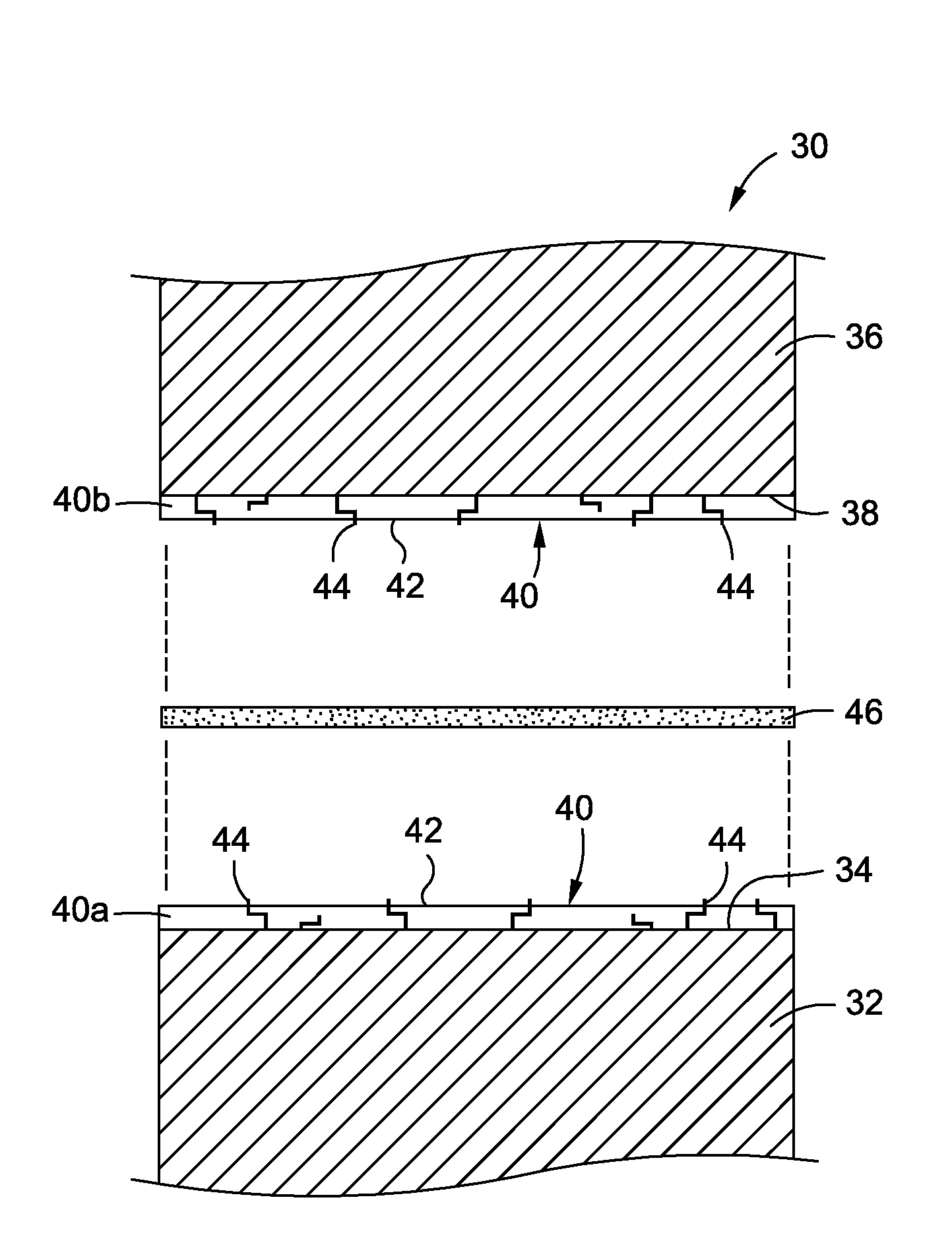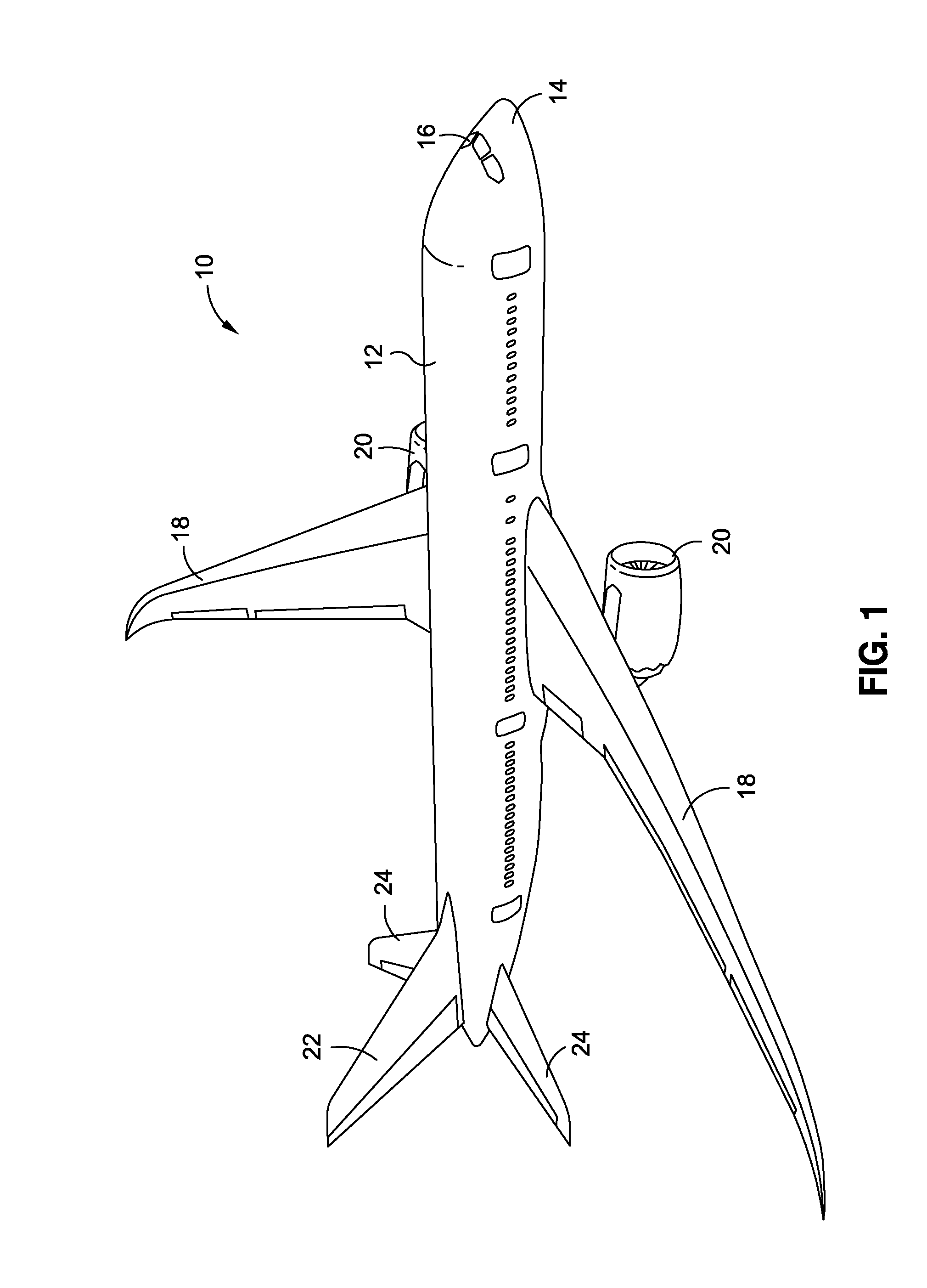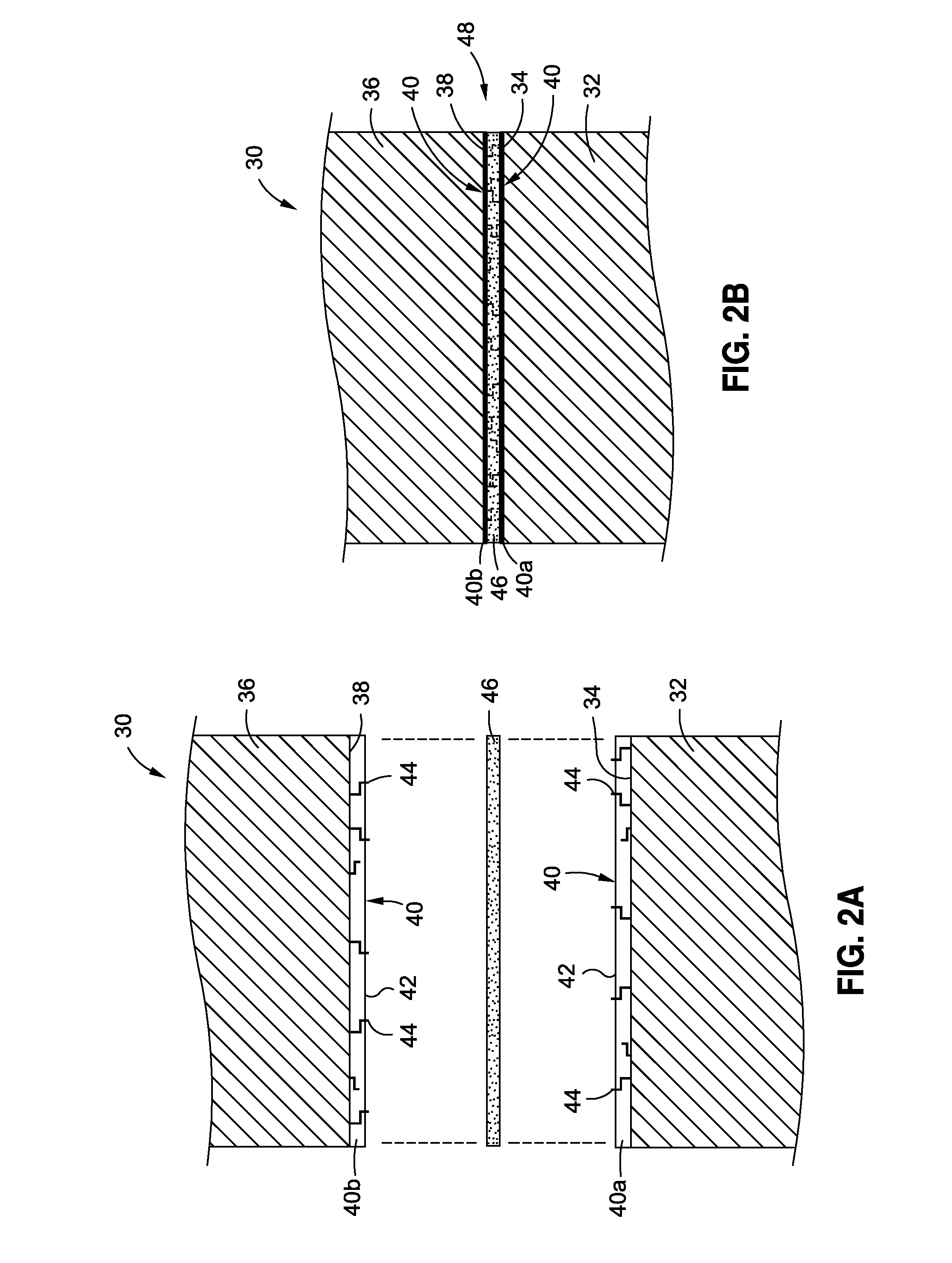High temperature hybridized molecular functional group adhesion barrier coating and method
a functional group and high temperature technology, applied in the direction of adhesive processes with surface pretreatment, water-setting substance layered products, transportation and packaging, etc., can solve the problems of increasing installation, labor, manufacturing costs, fuel costs, etc., to promote adhesion and bond composite and metal structures
- Summary
- Abstract
- Description
- Claims
- Application Information
AI Technical Summary
Benefits of technology
Problems solved by technology
Method used
Image
Examples
example 1
[0122]Comparative Surface Preparation Tests of Bismaleimide (BMI) Samples. Four (4) samples of bismaleimide (BMI) composite surface substrates were prepared, tested and evaluated using various surface preparation treatments, including: (1) “As received” which means the BMI composite surface had no surface preparation and the BMI composite surface had no exposure; (2) “Extracted” which means the BMI composite surface was washed with acetone solvent and then dried; (3) “Wiped” which means the BMI composite surface was hand wiped with an acetone silk cloth; and, (4) “Hand sanded” which means the BMI composite surface was hand sanded with 60 grit aluminum oxide sandpaper until black dust has been produced and a top layer of the BMI composite matrix material was removed with the hand sanding. An X-ray photoelectron spectroscopy (XPS) machine (Model SSX-100) obtained from Surface Sciences Inc. of Brea, Calif., was used to measure the concentrations of carbon (C), oxygen (O), nitrogen (N),...
example 2
[0123]Comparative Surface Preparation Tests of Bismaleimide (BMI) Samples With Addition of TFAA (Tetrafluoroaceticanhydride). Four (4) samples of bismaleimide (BMI) composite surface substrates were prepared, tested and evaluated using wiped and hand sanded surface preparation treatments before and after exposure to TFAA, including: (1) “Wiped” with isopropyl alcohol (IPA) which means the BMI composite surface was hand wiped with an isopropyl alcohol (IPA) soaked silk cloth; (2) “Wiped, TFAA exposure” which means the BMI composite surface was hand wiped with an isopropyl alcohol (IPA) soaked silk cloth and then the wiped BMI composite surface was treated with chemical derivatization compound TFAA; (3) “Hand sanded” which means the BMI composite surface was hand sanded with 60 grit aluminum oxide sandpaper until black dust has been produced and a top layer of the BMI composite matrix material was removed with the hand sanding; and (4) “Hand sanded, TFAA exposure” which means the BMI ...
example 3
[0124]Derivatization of Sanded Bismaleimide (BMI) Samples with Fluorinated Derivatization Compounds. Five (5) samples of bismaleimide (BMI) composite surface substrates were prepared, tested and evaluated using hand sanding surface preparation treatment and exposure to various fluorinated derivatization compounds. Each of the BMI substrate samples was prepared by first solvent wiping with acetone to remove handling contamination. Each of the BMI substrate samples was then hand sanded with 60 grit aluminum oxide sandpaper until black dust was produced. Each of the BMI substrate samples was then wiped with acetone and KIMWIPES (KIMWIPES is a registered trademark of Kimberly-Clark Corporation of Neenah, Wis.) followed by wiping with dry KIMWIPES until all of the sanding debris was removed. Each of four (4) BMI substrate samples was exposed to a different fluorinated derivatization compound vapor by suspending each of the four (4) BMI samples over a different fluorinated derivatization ...
PUM
| Property | Measurement | Unit |
|---|---|---|
| heat temperatures | aaaaa | aaaaa |
| temperatures | aaaaa | aaaaa |
| temperature | aaaaa | aaaaa |
Abstract
Description
Claims
Application Information
 Login to View More
Login to View More - R&D
- Intellectual Property
- Life Sciences
- Materials
- Tech Scout
- Unparalleled Data Quality
- Higher Quality Content
- 60% Fewer Hallucinations
Browse by: Latest US Patents, China's latest patents, Technical Efficacy Thesaurus, Application Domain, Technology Topic, Popular Technical Reports.
© 2025 PatSnap. All rights reserved.Legal|Privacy policy|Modern Slavery Act Transparency Statement|Sitemap|About US| Contact US: help@patsnap.com



